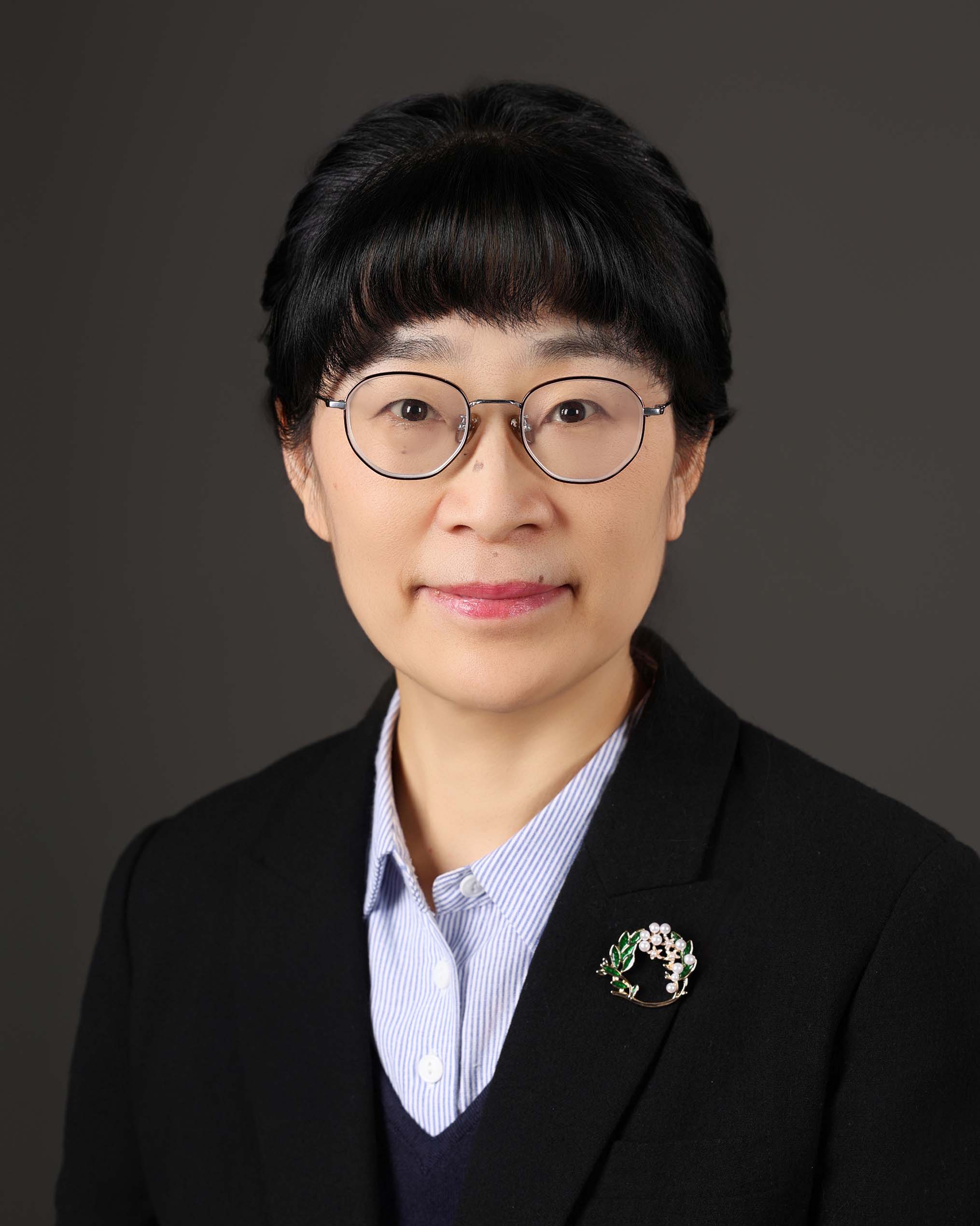
Junyu Xiao Ph. D
Group of protein structure and function
Professor, College of Life Sciences, Peking University
tel:
E-mail:junyuxiao@pku.edu.cn
1.Novel Secretory Pathway Kinases
2.Structure Biology of Macromolecular Machineries
1. Decipher the catalytic and substrate recognition mechanism of POMK
Protein O-mannose kinase (POMK, previously referred to as SgK196) is a carbohydrate kinase, and plays a critical role for the biosynthesis of functional alpha-dystroglycan. Despite compelling biochemical evidence in support of the kinase activity of POMK, its catalytic mechanism was puzzling, since it was long considered a pseudokinase. In a paper published in eLife, we have used a multidisciplinary approach to determine the architecture of the active site and the mechanisms underlying the catalytic and substrate-recognition activities of this unusual kinase. We show the crystal structure of POMK in complex with Mg2+ ions, ADP, aluminum fluoride, and the trisaccharide substrate. This structure provides a snapshot of the catalytic transition state of this glycan kinase, revealing an unprecedented kinase active site that is established by residues located in non-canonical positions and is stabilized by a disulfide bridge. Our results consolidate the catalytic function of POMK during the post-translational processing of alpha-DG, and facilitate a better understanding of the dystroglycanopathies and various physiological systems that depend on dystroglycan
2. Reveal an unprecedented ATP-binding mode in the pseudokinase Fam20A
Novel kinases specifically residing in the secretory pathway, exemplified by the family of sequence similarity 20 (Fam20) family, have been recently identified. Fam20C is the long-sought physiological Golgi casein kinase that phosphorylates many secreted proteins. Fam20A lacks an essential residue for catalysis and is therefore a pseudokinase. In a study published in eLife, we report the nucleotide-free and ATP-bound crystal structures of Fam20A. Fam20A displays an unusual disulfide pattern dictated by a pair of cysteine residues within the unique insertion region. Strikingly, ATP binds to Fam20A in an inverted orientation independent of cations. These results reinforce the conclusion that Fam20A is a pseudokinase in the secretory pathway and facilitate a deeper understanding of AI caused by Fam20A mutations.
3. Structural investigation of the inhibition mechanism of the Ethylene-forming enzyme by small molecule inhibitors
Ethylene is an important phytohormone that promotes the ripening of fruits and senescence of flowers thereby reducing their shelf lives. Specific ethylene biosynthesis inhibitors would help to decrease postharvest loss. Work from Dr. Hongwei Guo’s lab identify pyrazinamide (PZA), a clinical drug used to treat tuberculosis, as an inhibitor of ethylene biosynthesis in Arabidopsis thaliana, using a chemical genetics approach. PZA is converted to pyrazinecarboxylic acid (POA) in plant cells, suppressing the activity of 1-aminocyclopropane-1-carboxylic acid oxidase (ACO), the enzyme catalyzing the final step of ethylene formation. In collaboration with Dr. Guo’s group, we further determine the crystal structures of Arabidopsis ACO2 in complex with POA or 2-Picolinic Acid (2-PA), a POA-related compound. The structures reveal that POA/2-PA bind at the active site of ACO, preventing the enzyme from interacting with its natural substrates. Based on the structure information, we designed a series of ACO2 mutants and performed further biochemical experiments to validate the requirements of critical residues. Collectively, our studies demonstrate a different function of PZA in the control of plant ethylene biosynthesis, which holds potential applications in agriculture.
Deng MJ, Du S, Hou HD, Xiao JY. (2024) Structural insights into the high-affinity IgE receptor FcεRI complex. Nature, 633: 952-959.
Yang XK, Zhu MQ, Lu X, Wang YX, Xiao JY. (2024) Architecture and activation of human muscle phosphorylase kinase. Nat. Commun., 15: 2719.
Wang YX, Su C, Ji CG, Xiao JY. (2024) CD5L associates with IgM via the J chain. Nat. Commun., 15: 8397.
Zeng X, Wei TT, Wang XH, Liu Y, Tan ZS, Zhang YH, Feng TY, Cheng Y, Wang FZ, Ma B, Qin W, Gao CP, Xiao JY, Wang C. (2024) Discovery of metal-binding proteins by thermal proteome profiling. Nat. Chem. Biol., 20: 770-778.
Wang YX, Xiao JY. (2024) Recent advances in the molecular understanding of immunoglobulin A. FEBS J., 291: 3597-3603.
Niu X, Li ZQ, Wang J, Jian FC, Yu YL, Song WL, Yisimayi A, Du S, Zhang ZY, Wang QR, Wang J, An R, Wang Y, Wang P, Sun HY, Yu LL, Yang SJ, Xiao TH, Gu QQ, Shao F, Wang YC, Xiao JY, Cao YL. (2024) Omicron-specific ultra-potent SARS-CoV-2 neutralizing antibodies targeting the N1/N2 loop of spike N-terminal domain. Emerg. Microbes Infect., 13: 2412990.
Yang J, Liang K, Ke H, Zhang YB, Meng Q, Gao L, Fan JP, Li GH, Zhou H, Xiao JY, Lei XG. (2024). Enzymatic degradation of deoxynivalenol with the engineered detoxification enzyme Fhb7. JACS Au., 4: 619-634.
Li YX, Shen H, Zhang RX, Ji CG, Wang YX, Su C, Xiao JY. (2023) Immunoglobulin M perception by FcμR. Nature, 615: 907-912.
Ji CG, Shen H, Su C, Li YX, Chen SH, Sharp TH, Xiao JY. (2023) Plasmodium falciparum has evolved multiple mechanisms to hijack human immunoglobulin M. Nat. Commun., 14: 2650.
Cao YL, Yisimayi A, Jian FC, Song WL, Xiao TH, Wang L, Du S, Wang J, Li QQ, Chen XS, Yu YL, Wang P, Zhang ZY, Liu PL, An R, Hao XH, Wang Y, Feng R, Sun HY, Zhao LJ, Zhang W, Zhao D, Zheng J, Yu LL, Li C, Zhang N, Wang R, Niu X, Yang SJ, Song XT, Chai YY, Hu Y, Shi YS, Zheng LL, Li ZQ, Gu QQ, Shao F, Huang WJ, Jin RH, Shen ZY, Wang YC, Wang XX, Xiao JY, Xie XS. (2022) BA.2.12.1, BA.4 and BA.5 escape antibodies elicited by Omicron infection. Nautre, 608: 593-602.
Cao YL, Wang, J, Jian FC, Xiao TH, Song WL, Yisimayi A, Huang WJ, Li QQ, Wang P, An R, Wang J, Wang Y, Niu X, Yang SJ, Liang H, Sun HY, Li T, Yu YL, Cui QQ, Liu S, Yang XD, Du S, Zhang ZY, Hao XH, Shao F, Jin RH, Wang XX, Xiao JY, Wang YC, Xie XL. (2022) Omicron escapes the majority of existing SARS-CoV-2 neutralizing antibodies. Nature, 602: 657-663.
Wei TT, Wang J, Liang RQ, Chen WD, Chen YL, Ma MZ, He A, Du YF, Zhou WJ, Zhang ZY, Zeng X, Wang C, Lu J, Guo X, Chen XW, Wang YJ, Tian RJ, Xiao JY, Lei XG. (2022) Selective inhibition reveals the regulatory function of DYRK2 in protein synthesis and calcium entry. eLife, 11: e77696.
Du S, Wang GP, Zhang ZY, Ma CY, Gao N, Xiao JY. (2022) Structural insights into how GlcNAc-1-phosphotransferase directs lysosomal protein transport. J. Biol. Chem., 298: 101702.
Duan XM, Shi R, Liu PL, Huang QR, Wang FZ, Chen XY, Feng H, Huang WJ, Xiao JY, Yan JH. (2022) A non-ACE2-blocking neutralizing antibody against Omicron-included SARS-CoV-2 variants. Signal. Transduct. Target. Ther., 7: 23.
Zhu SY, Liu Y, Zhou Z, Zhang ZY, Xiao X, Liu ZH, Chen A, Dong XJ, Tian F, Chen SH, Xu YY, Wang CH, Li QH, Niu XR, Pan Q, Du S, Xiao JY, Wang JW, Wei WS. (2022) Genome-wide CRISPR activation screen identifies candidate receptors for SARS-CoV-2 entry. Sci. China-Life Sci., 65: 701-717.
Zhang HC, Shao SP, Zeng Y, Wang XT, Qin YZ, Ren QN, Xiang SQ, Wang YX, Xiao JY, Sun YJ. (2022) Reversible phase separation of HSF1 is required for an acute transcriptional response during heat shock. Nat. Cell Biol., 24: 340-352.
Cao YL, Jian FC, Zhang ZY, Yisimayi A, Hao XH, Bao LL, Yuan F, Yu YL, Du S, Wang J, Xiao TH, Song WL, Zhang Y, Liu PL, An R, Wang P, Wang Y, Yang SJ, Niu X, Zhang YH, Gu QQ, Shao F, Hu YL, Yin WD, Zheng AH, Wang YC, Qin C, Jin RH, Xiao JY, Xie XL. (2022) Rational identification of potent and broad sarbecovirus-neutralizing antibody cocktails from SARS convalescents. Cell Rep., 41: 111845.
Du S, Liu PL, Zhang ZY, Xiao TH, Yasimayi A, Huang WJ, Wang YC, Cao YL, Xie XL, Xiao JY. (2021) Structures of SARS-CoV-2 B.1.351 neutralizing antibodies provide insights into cocktail design against concerning variants. Cell Res., 31: 1130-1133.
Cao YL, Yisimayi A, Bai YL, Huang WJ, Li XF, Zhang ZY, Yuan TJ, An R, Wang J, Xiao TH, Du S, Ma WP, Song LY, Li YZ, Li X, Song WL, Wu JJ, Liu S, Li XM, Zhang YH, Bin S, Guo XH, Wei YY, Gao CAP, Zhang NN, Zhang YF, Dou Y, Xu XY, Shi R, Lu B, Jin RH, Ma YM, Qin CF, Wang YC, Feng YM, Xiao JY, Xie XL. (2021) Humoral immune response to circulating SARS-CoV-2 variants elicited by inactivated and RBD-subunit vaccines. Cell Res., 31: 732-741.
Li YX, Wang GP, Li NN, Wang YX, Zhu QY, Chu HR, Wu WJ, Tan Y, Yu F, Su XD, Gao N, Xiao JY. (2020) Structural insights into immunoglobulin M. Science, 367: 1014-1017.
Du S, Cao YL, Zhu QY, Yu P, Qi FF, Wang GP, Du XX, Bao LL, Deng W, Zhu H, Liu JN, Nie JH, Zheng YH, Liang HY, Liu RX, Gong SR, Xu H, Yisimayi AJ, Lv Q, Wang B, He RS, Han YL, Zhao WJ, Bai YL, Qu YJ, Gao X, Ji CG, Wang QS, Gao N, Huang WJ, Wang YC, Xie XS, Su XD, Xiao JY, Qin C. (2020) Structurally resolved SARS-CoV-2 antibody shows high efficacy in severely infected hamsters and provides a potent cocktail pairing strategy. Cell, 183: 1013-1023.
Wang YX, Wang GP, Li YX, Zhu QY, Shen H, Gao N, Xiao JY. (2020) Structural insights into secretory immunoglobulin A and its interaction with a pneumococcal adhesion. Cell Res., 30: 602-609.
Liu YJ, Duan ZL, Fang J, Zhang F, Xiao JY, Zhang WB. (2020) Cellular synthesis and X-ray crystal structure of a designed protein heterocatenane. Angew. Chem.-Int. Edit., 9: 16122-16127.
Shuo Du, Yuxin Wang, Xiaoke Yang, Yawen Zou, Ying Zhang, Ruixue Zhang, Chen Su, Shihua Chen, Meijie Deng, Mingqi Zhu, Zhiqiang Li, Xue Lu, Mai Zhang, Shirui Xu, Handi Hou, Shuhan Li, Haoran Cao, Yiqing Wang, Minghao Qu, Xiangyu Zhang, Pai Wang






